This Montessori Inspired Penguin Unit is full of "learn by playing" activities. In this unit you will find penguin nomenclature cards (matching work), counting activities, Montessori penguin puzzle with cards, sensory snow play, and geography (continent) work.
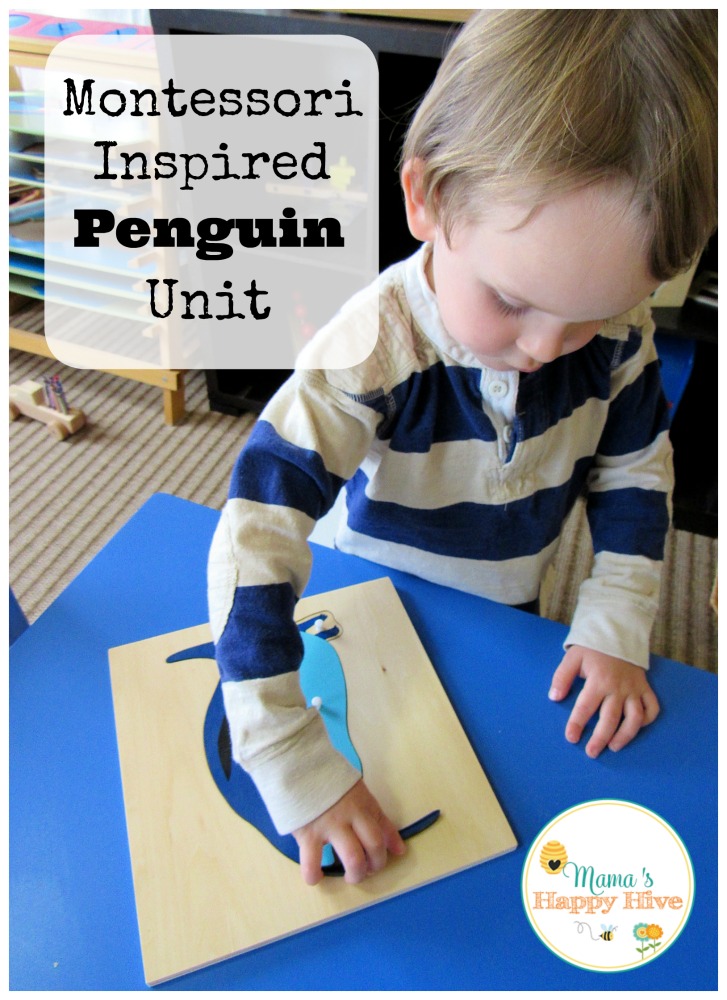
Materials Needed for this Unit Study:
- Penguin Printables -
- Safari Ltd TOOB Penguins
- Mystery Box with Numbers (Numbers can be any material - magnets, felts, puzzle pieces, Montessori numbers and counters, sandpaper numbers. One number just has to fit in the box.)
- Penguin Counting Printable (free) and Fish Crackers
- Montessori Penguin Puzzle
- Plastic Box for Sensory Play plus 32 oz of Cornstarch, Shaving Cream (1 can), and Silver Glitter
- Antarctic Map Printable (free) and/or Montessori Continents Puzzle Map
Types of Penguins - Matching Work
For this matching work, we used the Safari TOOB of Penguins and a penguin printable from "The Pinay Homeschooler" blog. I picked out six penguins for matching to the cards. Little Bee and I discussed the differences between these six penguins - chinstrap, rockhopper, chick, humboldt, emperor, and gentoo. I pointed out descriptive differences such as: "this one has a stripe on his chin" and "this one has a funny hairdo." After discussing the characteristics of each penguin, Little Bee matched them to the nomenclature cards. I found it helpful to print out the Safari Penguins TOOB key for identifying the penguins from the Safari TOOB.
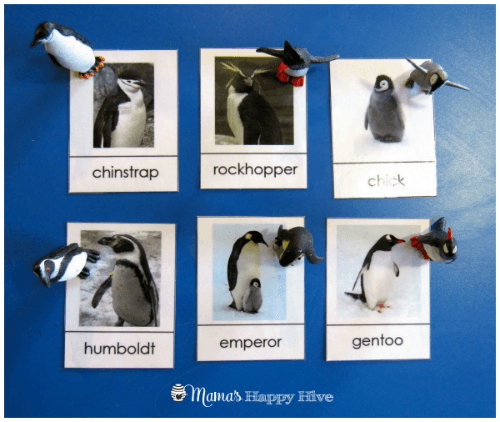
Mystery Box - Counting Work
Little Bee loves working with our math mystery box. He thinks it's great fun to open up the box and find out what is hiding inside. In this box I hid the number five (green felt glued on particle board) and five Safari TOOB penguins. As Little Bee took each penguin out, we counted them together. 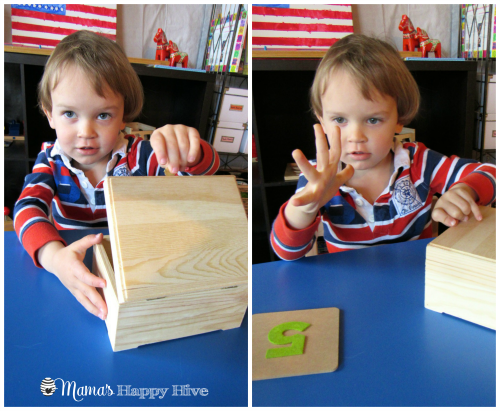
Feed the Penguins - Counting Mats
Little Bee and I loved this activity! He was so excited about "feeding" the penguins his fish crackers. I pointed out each number on the penguin card and then we counted out the fish crackers to feed that penguin. We started with just three cards and worked up to six cards. However, Little Bee did not understand the concept of zero. He was quite upset when the "0" penguin received no fish crackers. He refused to allow this poor penguin to have no fish crackers to eat and loaded him up with the most crackers. LOL! We will work on the concept of zero later.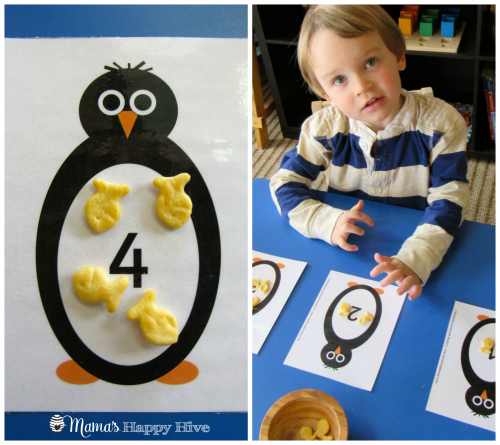
Montessori Penguin Puzzle Work
I have mentioned before that I love Montessori puzzles. They are my favorite Montessori materials because they are beautiful and facilitate hands-on learning. Here is a lovely post on extension exercises that can be done with these puzzles for years of learning and fun!
In this activity, Little Bee matched the penguin puzzle pieces to anatomical parts of the penguin nomenclature cards found in the Antarctica A-Z from "Trillium Montessori" blog. Then he reassembled the puzzle using his sense of proprioception (positioning objects into place) and fine motor muscles.
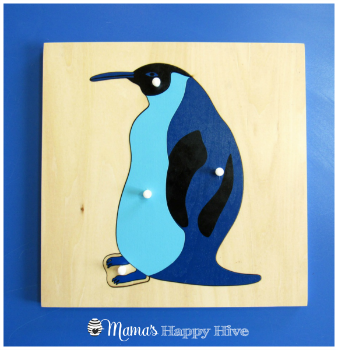
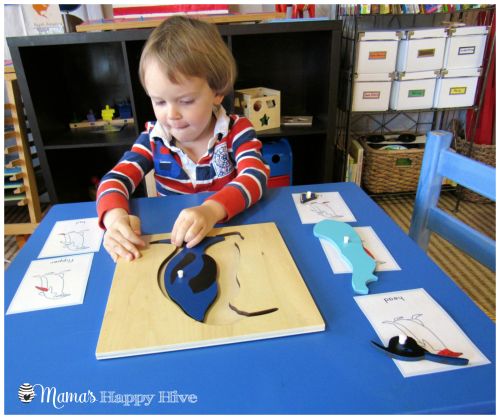
Sensory "Snow" Dough Play
We had a huge snowstorm but it was followed by unusually warm weather. This warm weather melted all our snow! Since I didn't have the "real" snow to fill up our plastic sensory snow bin, I decided to make our own pretend snow. I followed this very easy recipe from the "Two Sisters Crafting" blog to create our pretend snow.
This sensory activity was messy, but Little Bee LOVES messy play! So the mess was worth the effort. He played with his Safari TOOB penguins in the snow for over an hour. As he played, I explained to him that penguins live in a cold environment where there is snow and icebergs. To represent the icebergs, I added a cup full of ice cubes that Little Bee had fun digging around to find.
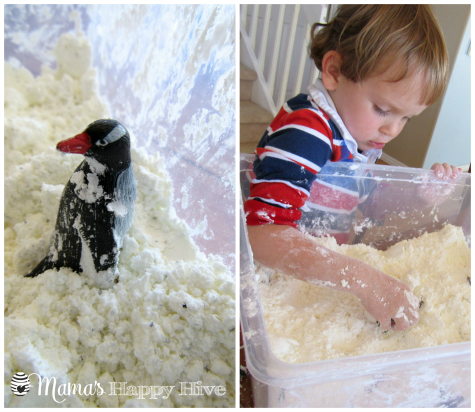
Penguin Continent Work
This activity was inspired by the "Living Montessori Now" blog. There are several species of penguins that live on Antarctica - emperor, chinstrap, adelie, gentoo, and rockhopper. However, it is important to note that a few penguins do not live on Antarctica. The south african penguin lives in South Africa. The humboldt penguin lives in South America and the rockhopper lives in both South America and Antarctica.
This activity is fairly simple: the child places all the antarctic Safari TOOB penguins on the map of Antarctica. For an older child, you can google where each penguin lives on the antarctic continent and specifically place them in the correct spot on the map.
As part of our unit study, Little Bee and I watched a penguin documentary similar to the "March of the Penguins." It was called, "Pengi and Sommi" with English subtitles. (It was free on Amazon Prime.) This was wonderful exposure to another language while also learning about where the emperor penguins and other penguins live on Antarctica.
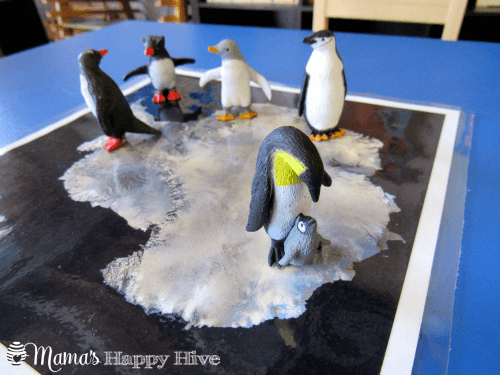 In the photo below, Little Bee is learning that some penguins live in South Africa and South America using our Montessori Continents Map.
In the photo below, Little Bee is learning that some penguins live in South Africa and South America using our Montessori Continents Map.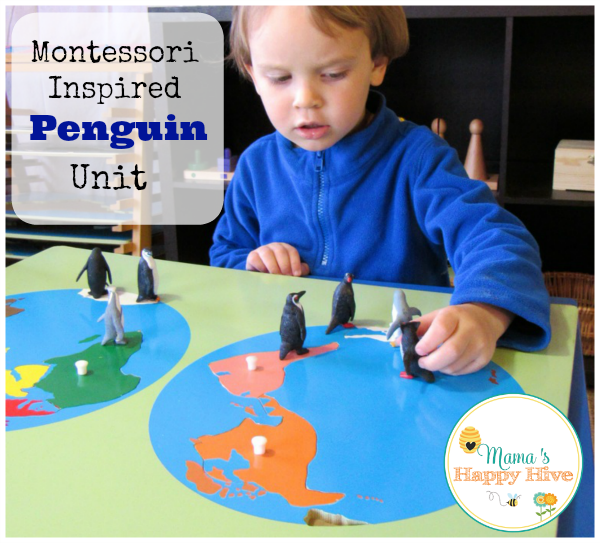
Follow Mama's Happy Hive's board Geography Unit Study on Pinterest.


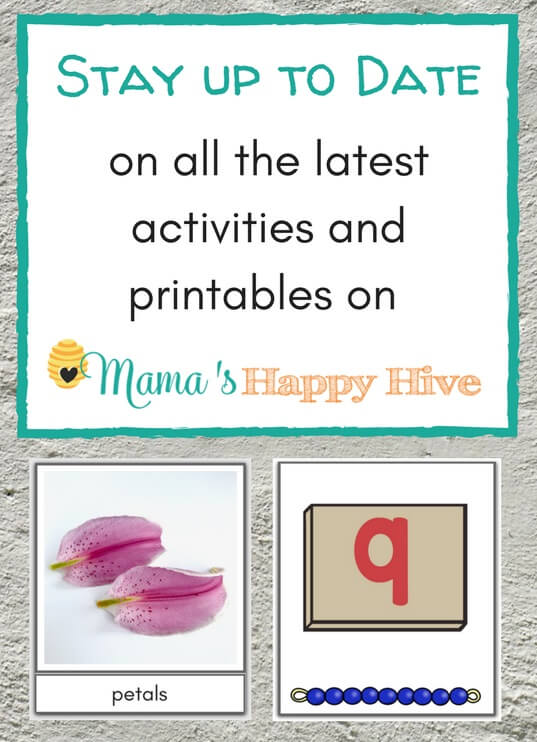
This is so cute! Bells loved her Penguin activities. Those penguin counters are adorable.
Such a great set of penguin activities!
I love this unit! Amazing job to Mom and little B. Thanks for the mention!